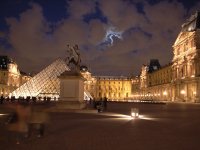dcsang
Canadian & Not A Dentist
I've only been browsing the DPReview Ricoh forum as I'm still researching this P&S cam and came across a thread with a great review of the camera:
http://www.eyeswitching.com/ricoh_grd_ii_rev.html
The reviewer seems to be very honest and unbiased and is not one of the "regular" reviewers (i.e. Phil Askey, Steve's Digicams, Dave at Imaging Resource etc.) but that's just my opinion...... which I like to believe is also honest and unbiased.... although you may think differently.. which then makes you the biased one 😀
Cheers
Dave
http://www.eyeswitching.com/ricoh_grd_ii_rev.html
The reviewer seems to be very honest and unbiased and is not one of the "regular" reviewers (i.e. Phil Askey, Steve's Digicams, Dave at Imaging Resource etc.) but that's just my opinion...... which I like to believe is also honest and unbiased.... although you may think differently.. which then makes you the biased one 😀
Cheers
Dave



